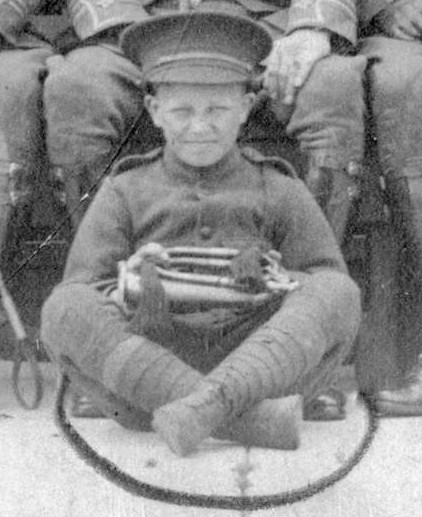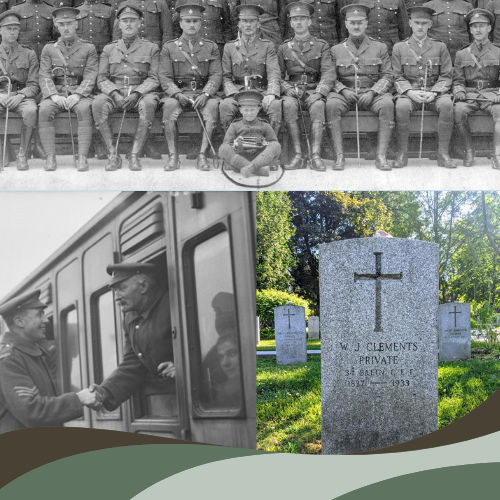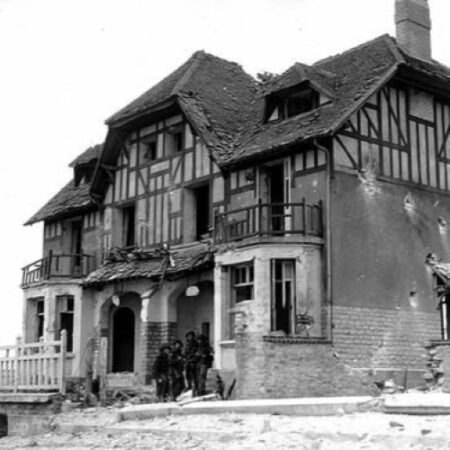During World War I, some Canadian recruits overcame age restrictions in order to join the army. As a result, children and men much older than the official age limit were sometimes enlisted as soldiers! For these individuals, age truly became just a number.
During the First World War, thousands of Canadians went to their local recruitment office to enlist. However, not everyone was eligible to join. The Canadian Expeditionary Force had specific requirements on what made a soldier fit for service. One requirement that stopped many individuals was age. Generally, a person had to be between the ages of 18-45 to enlist. In some cases, underage Canadians also could enlist if they had parental permission. However, historical documents demonstrate that many recruits successfully lied about their age so that they could serve in the Canadian Expeditionary Force. In this blog post, we will explore some of the most extreme examples of this phenomenon.
William Henry Hutchinson
Age according to attestation paper: 12
Actual age at enlistment: 11
William Henry Hutchinson’s story of enlistment is very unusual, even for an underage soldier. He was born in 1905 in Kent, England. In 1908, his family moved to Montana, where his father unfortunately died in a workplace acident. Shortly after, the family moved to Vancouver, British columbia and his mother remarried. As a child, Hutchinson took a part-time job selling the local newspaper, The Province. With his earnings he purchased a bugle. One day while he was playing in the backyard, some soldiers from the nearby military camp heard him practicing and asked him to join their band as a bugle boy. According to militia regulations at the time, “boys of ‘good character’ between the ages of 13 and 18 could be enlisted as bandsmen, drummers, or buglers”. He enlisted in June 1916 with the 211th Battalion. Interestingly, Hutchinson incorrectly gave his year of birth as 1904. This was likely to make it appear that he was closer to the required age than he actually was. Since he only was 4’ 5’’ tall, well under the height requirement in 1916, Hutchinson needed a special uniform.
As a young child, Hutchinson would never have been allowed to join the battalion in Europe. He was therefore discharged on December 2, 1916, a few weeks before the battalion was to go overseas. While that should have been the end of his war service, he snuck aboard the HMT Olympic, with the help of some of his friends in the battalion, when they set sail on December 20th . Overseas he became the battalion’s ‘mascot’ and presumably, his friends helped him lie about his age to others who did not know him. In March 1917, the battalion was transferred to the Canadian Railway Troops. By April April Hutchinson found himself in France on the front. While there, he worked as a dispatch messinger for troops operating field telegraphs.

Since he was a stowaway, there are very few records of Hutchinson’s time in France. According to an interview given later in his life, Hutchinson was wounded in the right leg in 1917 somewhere near Neuve-Église, France. It was only after he went to the hospital for treatment that the authorites discovered his age and sent him home. Although there are no records of this injury, Hutchinson’s discharge papers do support that some sort of injury occurred, as it is noted that he received one gold casualty stripe. However, his military records also suggest that Hutchinson was sent home after his mother found out that he was in France and formally complained to the military authorities. Regardless of how it happened, Hutchinson was sent back to England in September 1917 and arrived back in Canada on November 30, 1917. Due to the peculiar nature of his service, he did not receive payment for his service overseas until after he returned to Canada. In fact, it was only after the signing of a special Order in Council on January 12, 1918 that the government recognized his service.
In 1919 Hutchinson reenlisted, this time with the 11th Battalion of the Canadian Garrison regiment, and stayed with the regiment until demobilization. After the war, he briefly worked as a professional boxer, calling himself Billy ‘Kid’ Nash (Nash was his step-father’s surname). By the 1930s he was working as a longshoreman. Hutchinson passed away at Shaughnessy Hospital in Vancouver in 1969 and is buried at Forest Lawn Memorial Park. He was the youngest known soldier to serve overseas with the Canadian Expeditionary Force.
Read the rest of the article on Honouring Bravery
Article written by Anthony Badame for Honouring Bravery.






